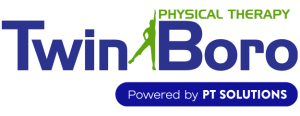Background & Etiology
A tendon is part of the muscle that attaches muscle to bone. It is a strong, fibrous tissue that is responsible for transferring the forces generated by the muscle to the bone, thus producing movement at the joint. When a tendon becomes irritated or inflamed it becomes painful, especially with movement. Inflammation of the tendon is called tendonitis.
Lateral Epicondylitis
Sometimes called Tennis Elbow, occurs when stress on the muscles in the forearm, causes the extensor tendons to become inflamed where they attach on the lateral epicondyle (a section on the lower humerus.) The tendon most often involved in lateral epicondylitis is the Extensor Carpi Radialis Brevis (ECRB.)
Lateral Epicondylitis is most often caused by an overuse repetitive strain injury (RSI). Commonly identified with a tennis swing or racquet sports especially the back hand, any repetitive action characterized by strain on the forearm and elbow can lead to Lateral Epicondylitis. Common causes of Lateral Epicondylitis include:
- This condition occurs most often in individuals 30-50 years of age
- Participating in athletic activities that can strain the elbow and arm, such as tennis .
- Repetitive strain injuries (RSI) at work occur in people who have jobs that require performing activities of a repetitive nature , like plumbers or carpenters
- Sustained activities that require grasping.
- Elbow pain or tenderness directly over the tendons that can radiate to the forearm
- Pain or burning sensation during activities on the outer side of the elbow
- Difficulty making grasping motions, bending the wrist or turning the forearm down
- Weakness may occur as the inflammation gets worse
- Feeling of tightness or loss of motion due to discomfort
- Swelling of the tendon
If an individual suspects they have Lateral Epicondylitis, the initial treatment should consist of avoiding the positions and activities that produce the pain. A course of conservative treatment is usually recommended that would include rest and immobilization, ice, gentle stretching, physical therapy and non-steroidal medications to reduce inflammation.
If symptoms persist, treatment by your physician may be necessary. This may include steroidal medication or injections, in conjunction with therapy. In severe cases surgical intervention may be needed to correct any mechanical causes of the tendon irritation.
Physical Therapists are professionals, educated and trained to administer interventions. As stated in The Guide to Physical Therapist Practice, interventions are the skilled and purposeful use of physical therapy methods and techniques to produce changes consistent with the diagnosis, prognosis and goal of the patient or client. Common interventions in the treatment of Lateral Epicondylitis include:
- Manual Therapeutic Technique (MTT): hands on care including soft tissue massage, manual stretching, deep friction massage and joint mobilization by a physical therapist to reduce pain, regain mobility, and range of motion of the elbow and forearm.
- Therapeutic Exercises (TE) including stretching and strengthening exercises to regain range of motion and strengthen the elbow and effected muscle.
- Neuromuscular Reeducation (NMR) to restore stability, retrain the upper extremity, and improve movement technique and mechanics (for example, gripping activities, throwing or swinging activities) in daily use of the involved upper extremity.
- Modalities that can include the use of ultrasound, electrical stimulation, ice, cold laser and others to decrease pain and inflammation at the elbow and tendon.
- Home program that includes strengthening, stretching and stabilization exercises and instructions to help the person perform daily tasks and advance to the next functional level.
Procedures that your physician may recommend and perform in addition to physical therapy that include:
- REST and ICE
- The use of NSAIDS (Non Steroidal Anti-Inflammatory Drugs)
- Steroidal injections to reduce inflammation
- Pain medication to reduce the discomfort and allow the patient to perform the recommended exercises
- Use of a lateral epicondyle strap or brace to reduce stress on the effected tendon
- Surgery to correct underlying pathology or the cause of the tendonitis
Prognosis
Most people recover full function following a course of conservative care that includes physical therapy, medication and/or injections. It is important that once the pain and inflammation is reduced, and motion and strength are restored, the patient gradually returns to full activities. Instruction in daily activities or sport performance is helpful for reducing a reoccurrence of Lateral Epicondylitis.
Prevention
It is easier to prevent tendinitis than to treat it. Below are some tips to reduce the risk of tendinitis.
- Warm up lightly before activity to improve circulation and lubricate the muscle and tendon. Warm up should be performed to the area that will be used.
- Stretch the tendons and muscles you will be using, after your warm up, prior to the activity, and after it. Do not bounce when stretching. Instead, hold the stretch for 15-20 seconds.
- Strengthen the muscles and tendons that you need to use for your activity. A regular strengthening program three times a week will keep muscles prepared for the job you are asking them to perform.
- Do not work through pain. Listen to your body. Avoid the “no pain, no gain” philosophy.

